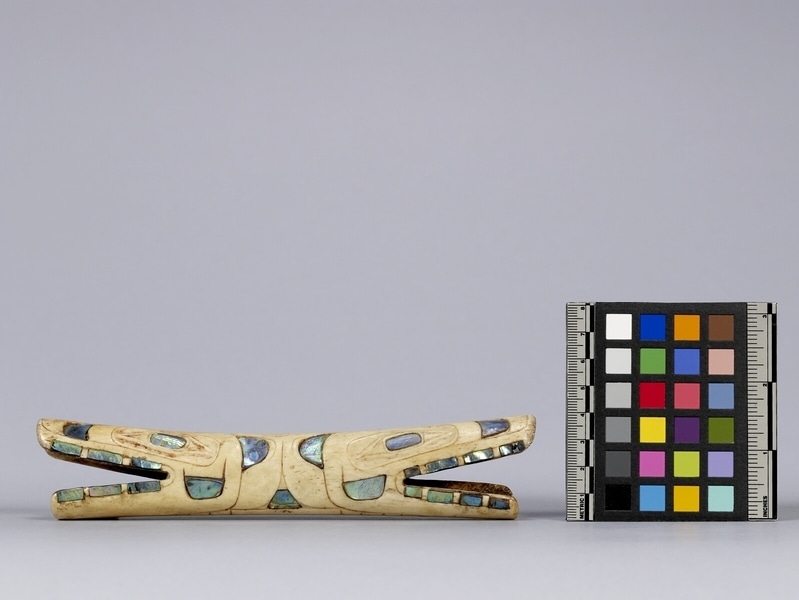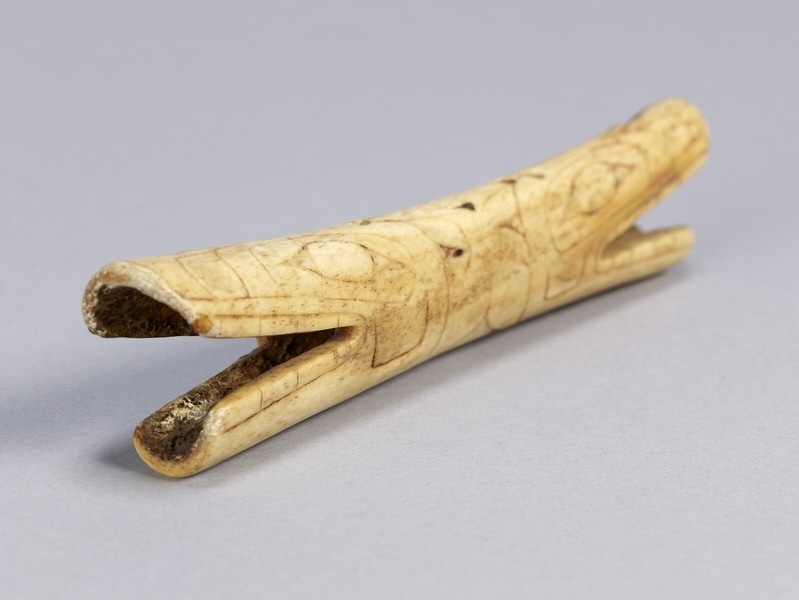Soul Catcher Item Number: 1100/1 from the MOA: University of British Columbia



Description
Soul catcher made of a hollow tubular piece of bone with inlaid abalone. Each end of the tube flares slightly and is carved out in silhouette to represent the open mouth of a creature resembling a bear, wolf, or whale. Abalone shell is inlaid on one side of the faces at teeth, eyes, cheeks, ears and nostrils.
History Of Use
Halaayt-dim-swannasxw were men and women with powerful relationships with the spirit world. The term describes the healing practice of the halaayt, who drew the illness or injury out of their patients and blew it from the house [Muldon, Shirley]. As material expressions of this power, soul catchers carved of bone were historically worn on a hide thong around the neck of the halaayt. Cedar bark plugs would have been placed in the opening at either end, it is said, to capture and return souls that had left the body, or to contain a malevolent spirit. Oral traditions among the Tsimshian and Gitxsan indicate that soul catchers of this type were conventionally made from the femur, or shin bone, of a grizzly bear. Each end of the hollow tube flares slightly and is carved out in silhouette to represent the open mouth of a creature resembling a bear, wolf, or whale.
Item History
- Made in British Columbia, Canada during 1850
- Owned by Marjorie J. Finlayson before January 31, 1986
- Received from Marjorie J. Finlayson (Donor) on January 31, 1986
What
- Name
- Soul Catcher
- Identification Number
- 1100/1
- Type of Item
- soul catcher
- Material
- bear bone ? and abalone shell
- Manufacturing Technique
- engraved
- Overall
- height 2.4 cm, width 18.7 cm, depth 3.9 cm
Who
- Culture
- Gitxsan
- Previous Owner
- Marjorie J. Finlayson
- Received from
- Marjorie J. Finlayson (Donor)
Where
- Holding Institution
- MOA: University of British Columbia
- Made in
- British Columbia, Canada
When
- Creation Date
- during 1850
- Ownership Date
- before January 31, 1986
- Acquisition Date
- on January 31, 1986
Other
- Condition
- good
- Accession Number
- 1100/0001